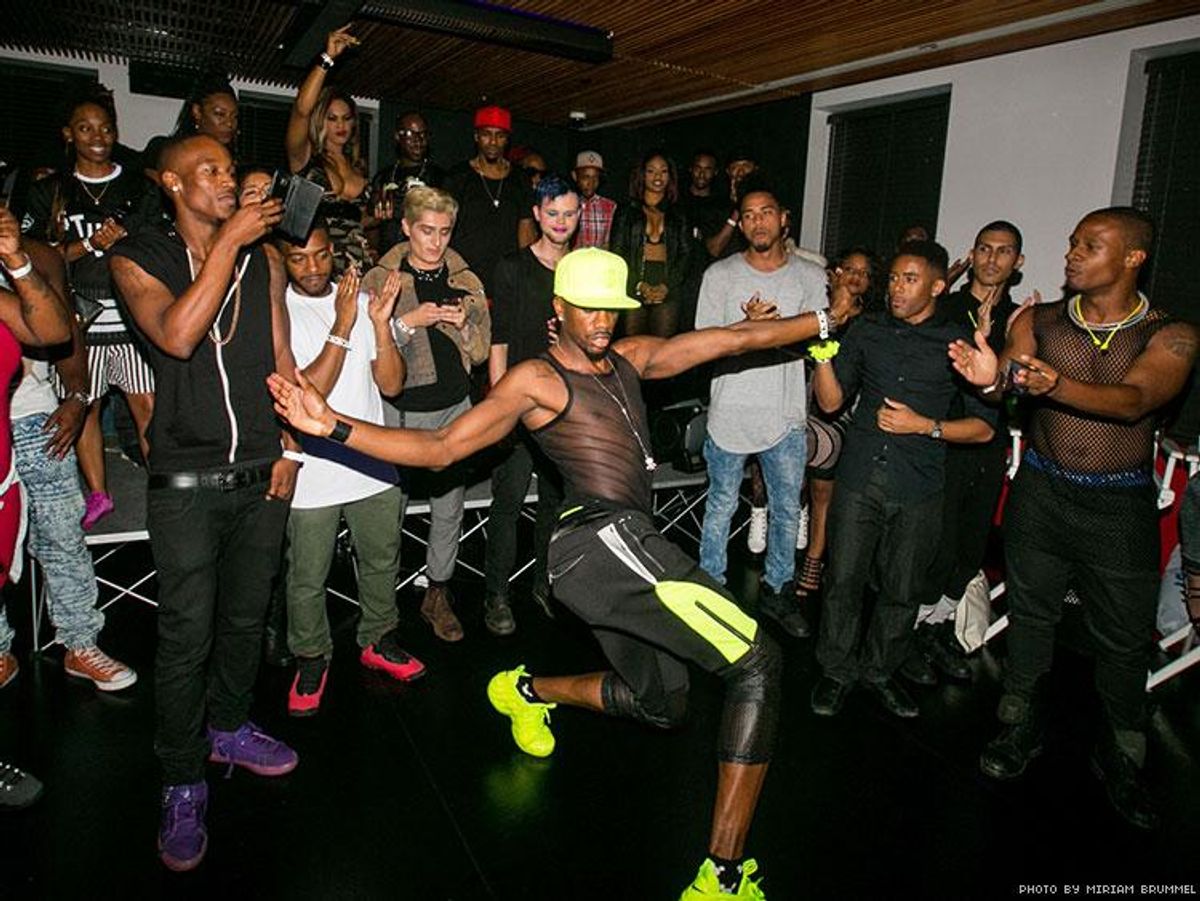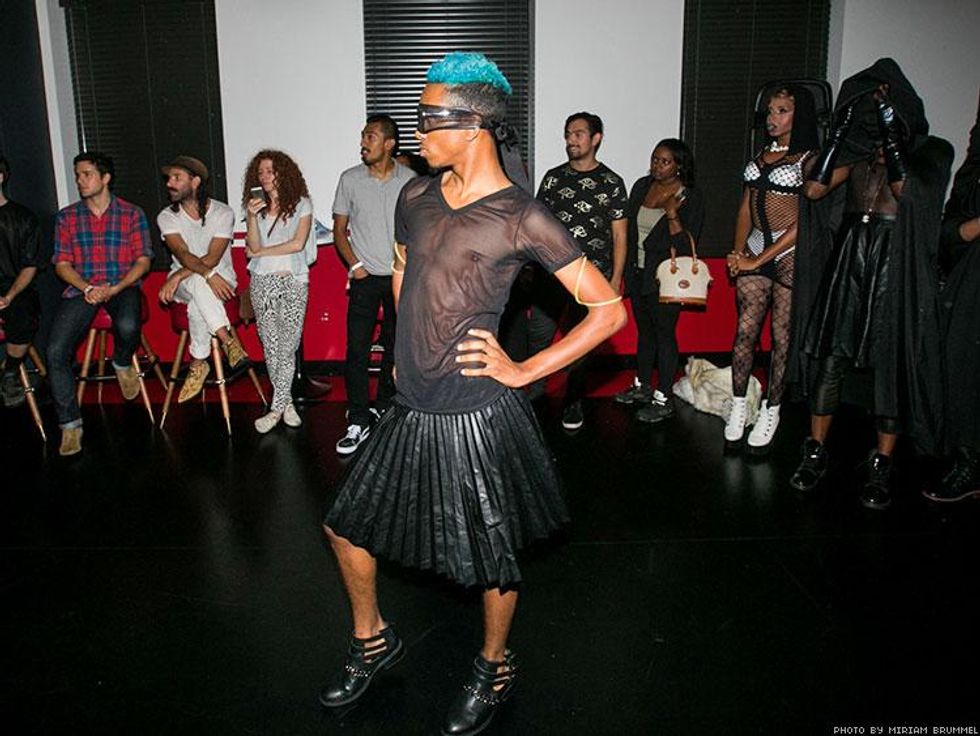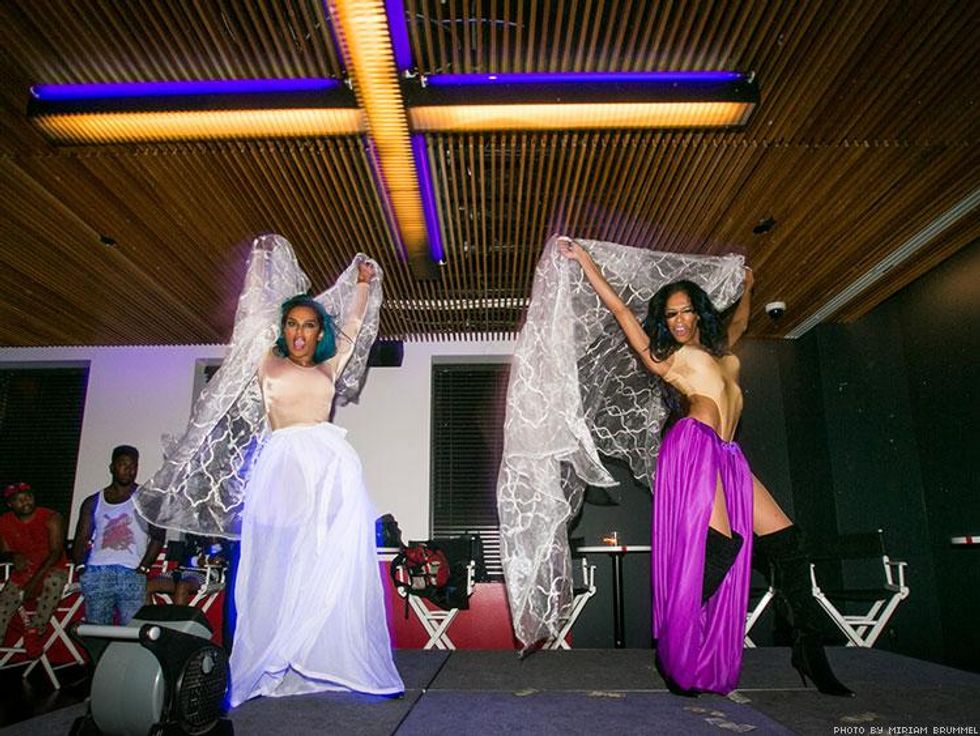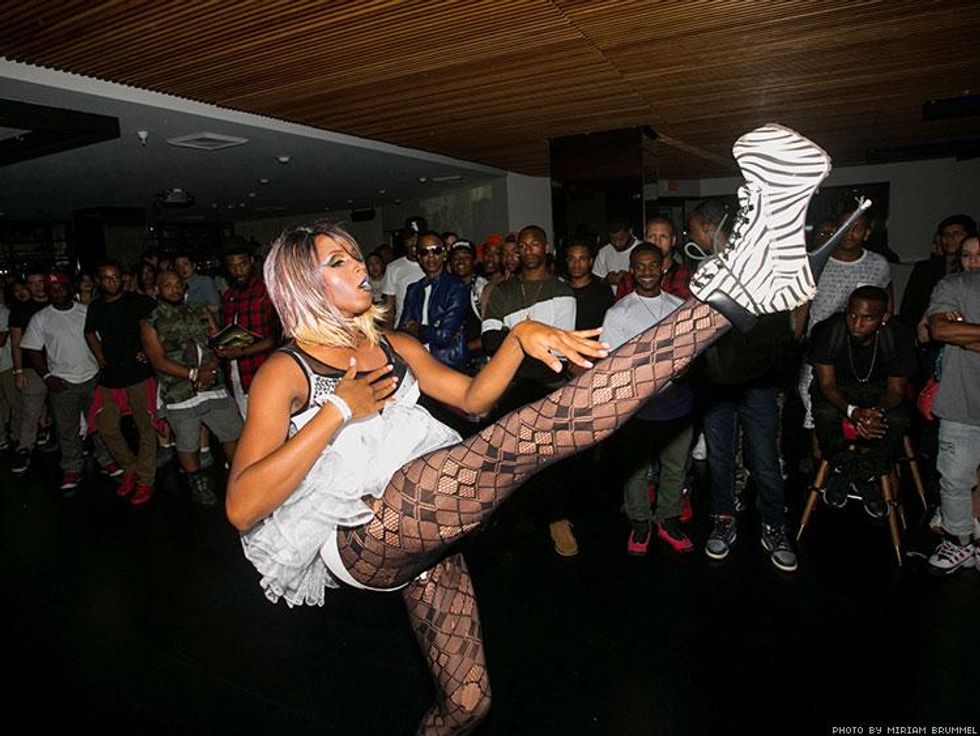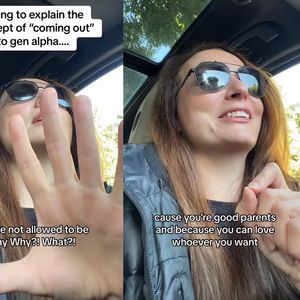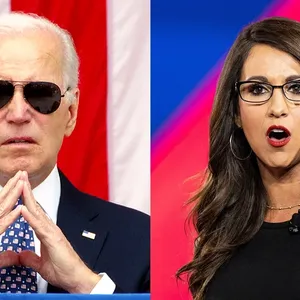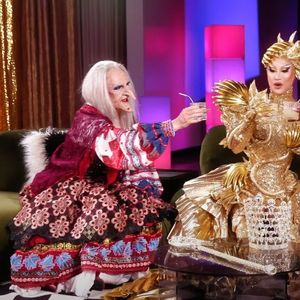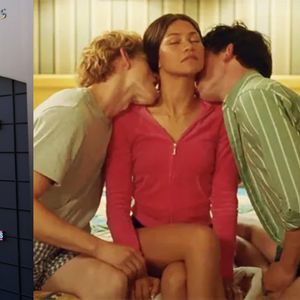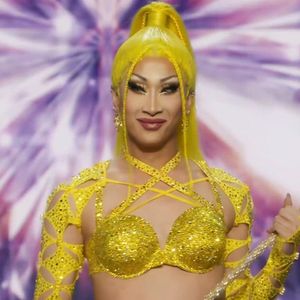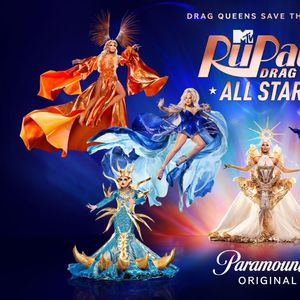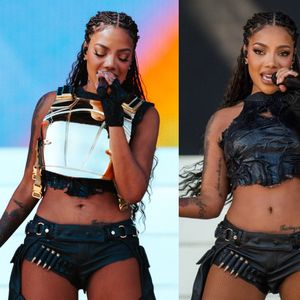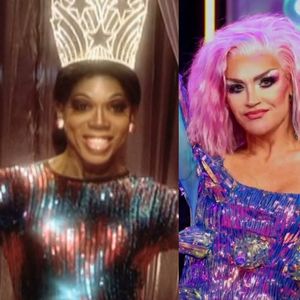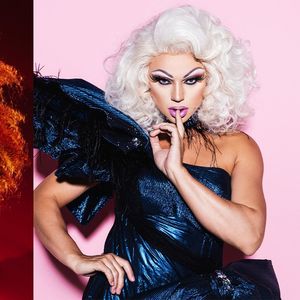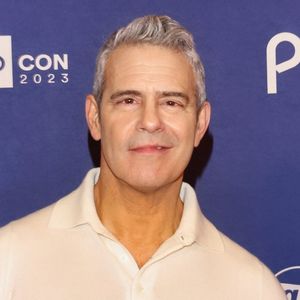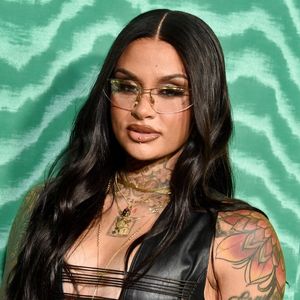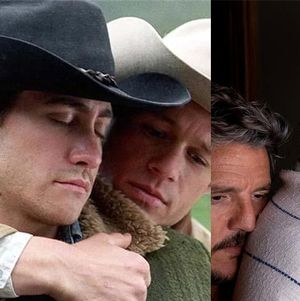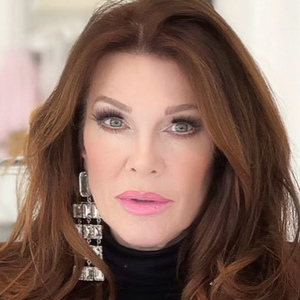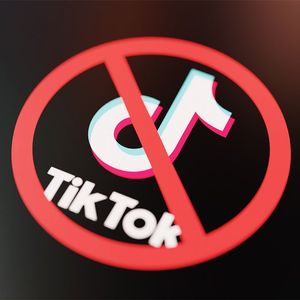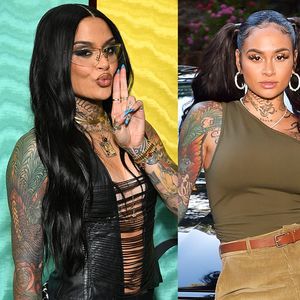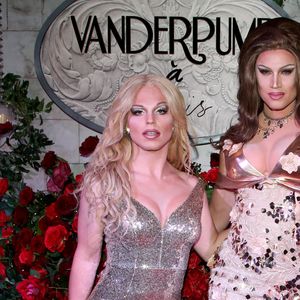Every Saturday, a large number of well-heeled and mostly straight patrons line up outside the Standard, a '70s-chic hotel in the heart of downtown Los Angeles, and wait up to an hour to obtain access to its rooftop bar. But for a very different clientele -- black queer and gender-nonconforming youth in their early 20s -- the second floor is a haven about which only a handful know. If you're one of the roughly 100 attendees of the Banjee Ball, you can skip the line and walk right in.
Inside the Spin Room, near the second-floor escalator, leather sofas and cabaret tables are pushed against the walls. Across the cleared-away floor, young black men are voguing fiercer than anyone in Madonna's iconic music video. And the show hasn't even started. This is rehearsal.
The Banjee Ball is a voguing ball that was started two years ago by founder and voguing artist Isla Cheadle. Cheadle learned to vogue in studio space provided by Reach L.A., a nonprofit that organizes community and health services for black and Latino gay, bi, and transgender youth. The Banjee Ball happens once a month and is one of several events that Reach L.A. work with to give at-risk youth a safe space to learn and perform. As a gathering, its underground vibe carries on the generations-old tradition of ball culture, which can be traced back to New York City as early as the 1930s and is most iconically depicted in the 1990 documentary Paris Is Burning.
LaQuan Lewis, a young black man from south Los Angeles, stands by a column charging his iPhone. "I'm here with these guys," he nods at a girl and boy standing nearby watching the warmup. "We have our own group and we're here looking for dancers. There's a lot of really good ones here." Lewis's group, La Losta, is one of several troupes or "houses" starting across the city. "It's awesome. It's a place where everyone can just do their thing."
It certainly is. Absent of any homophobia, this is a space where gender nonconformity is cheered on by the thickening crowd, which is made up mostly of black men and women in their early 20s. Many are in drag, and some are wearing costumes and masks. As the boundary between stage and audience blurs, the music cranks up a few decibels and black lights flicker on across the ceiling, casting everyone in neon.
For generations, ball culture has been a place of escape and defiance for young black and Latino gay, bi, and transgender women who were disenfranchised in their communities and kicked out of their homes. The Banjee Ball is no different. According to Brian Toynes, program manager of sexual health and education at the Los Angeles LGBT Center, many attendees at the ball come from poorer neighborhoods, have no health insurance, and also no knowledge of PrEP (pre-exposure prophylaxis), a daily treatment which last year was proven up to 99 percent effective at preventing HIV transmission.
This is a problem, since these young men comprise the demographic that is highest at risk for HIV. According to the Centers for Disease Control, 25 percent of young black gay or bisexual men will become HIV positive by age 25. By the age of 40, that number goes up to 60 percent.

To better reach this demographic, the Los Angeles LGBT Center is bringing the fight to the ball. Partnering with Reach L.A., the organization has started setting up tables at the events where it provide information about its testing services for HIV and other sexually transmitted infections.
For Toynes, this is familiar territory. He worked for the Gay Men's Health Crisis in New York for six years and was involved with the large house and ball scene there. "I hired a lot of staff and we threw an event called the House of Latex, which was one of the largest balls in the United States," he says. "We had 4,500 people show up to the event in midtown New York. It was a great opportunity for us to do HIV testing and to provide health care."
The House of Latex Ball has become an ongoing tradition in New York City, drawing thousands of attendees every year. "There were big segments of that community that passed away from HIV/AIDS," Toynes says. "So we were honoring those individuals while also reaching the younger folks."
Jeffrey Rodriguez, program manager of sexual health education at the L.A.LGBT Center, says the group's presence at the balls is vital, since many attendess do not live in or near West Hollywood, where information on HIV and PrEP is readily available. "It's an opportunity to offer PrEP services to people who maybe didn't know it was available or affordable or accessible," he says.
Stronger involvement with the house and ball community is just one of the center's plans for the year ahead. This fall, the center's small West Hollywood clinic, called the Spot, will close, and its HIV and STI testing services will transition to its new West Hollywood location on Santa Monica Boulevard, which is set to open in early October. The significantly larger space is designed to accomodate the increased traffic the Spot has been seeing.
The center is also partnering with the Latino Equality Alliance to open a new location in east L.A.'s Boyle Heights, which is a predominantly Latino neighborhood. Dustin Kerrone, director of sexual health programs at the LGBT Center, hopes these new locations will reach demographics that have been difficult to reach in the past. "Our biggest goal right now is racial diversity," he says.

But West Hollywood is not the best location to reach black gay and bi men. "The problem is that we're a very segregated city," Rodriguez says. "You have south L.A. You have east L.A. You have west L.A. We've got all these different parts of the city, and who actually lives in those parts? West Hollywood is predominantly white. South L.A. is predominantly black."
However, Kerrone believes a change is under way. "From polling people who go out at night, we're seeing a big influx of Latino and African-American people coming in to West Hollywood to party," he says. "They're coming into West Hollywood because there are more gay bars in the area now. There used to be a place called Catch One that just recently closed that was around since the '70s. It was a black gay and LGBT bar that just recently went out of business. So we're seeing a lot more integration."
But surveys at the balls reveal a bigger problem than just geographic location. Last July the LGBT Center partnered with Reach L.A. to hold a ball downtown. While there, representatives from the Center handed out questionnaires to see how racism affects LGBT black and Latino youth. "We wanted to look at how these micro-aggressions impact mental health, decision making, and health outcomes," Toynes says.
On the survey, attendees were given a list of experiences and asked to rate their response to them from "Did not happen/Not applicable to me" to "It did happen and it bothered me EXTREMELY." The experiences included "Being rejected by potential sex or dating partners because of your race/ethnicity," "Reading personal ads that say 'White People Only,'" and "Not having any LGBT of color as positive role models."
The surveyors found that many attendees felt a very strong racism from white LGBT people, which has been widely analyzed as a complicit factor in the disproportinate HIV rates among black gay and bi men. And according to Rodriguez and Toynes, the problem is compounded when black American culture tends to hold a distrust of medicine in general. Many black LGBT people, they say, see medicine as an establishment run by the wealthy and the white. These feelings adds to the divide that workers at the Los Angeles LGBT Center must cross in order to reach both at-risk and HIV-positive black men.

"Because of the history of black culture in this country, there's no trust," Rodriguez says. "The feeling among many black gay and bi men is that no one cares about this community."
Last Friday there was no presence from the LGBT Center at the Banjee Ball. But Rodriguez says the center is waiting for its new West Hollywood location to open before increasing its outreach. "We want to make sure that we can promote our services and actually be able to see as many individuals as we can," he says.
As the show gets ready to start, Lewis says that attendance is slimmer this month than at previous events. But spirits are high. Whenever someone new joins the runway, they are greeted with cheers and hugs. This is a fraternity of kids hardly old enough to drink who have found a place where they can show their talent, explore their sexual and gender identities, and meet others.
It is alarming to think that these confident, progressive-minded young men are the ones HIV statistics lean against, that racism from LGBT injures, and that large organizations like the Los Angeles LGBT Center struggle to reach. They slay the runway till two in the morning, at which time everyone reluctantly files out through the Standard's elegant lobby and back into the world outside.
Photography by Miriam Brummel.
The Advocate's #6in10MenIf nothing changes, 6 in 10 black gay and bisexual men in the United States will have HIV by the time they are 40 years old. Learn more about this crisis in The Advocate's series #6in10Men: https://www.advocate.com/6in10men
Posted by The Advocate magazine on Friday, September 25, 2015
